Fresh Batch #100: Irish Use of the Etruscan God Aesar
More Proof of Their Ancient Italian Heritage
Edward O’Reilly, author of the Irish Dictionary, wrote in letter to William Betham (Irish Antiquarian Researches, p. 29) citing General Vallancey, “The learned General further informs us, that he was “favoured with drawings of several boxes of this kind, fabricated since Christianity, being ornamented with crucifixes” but he adds, “this has no marks of that kind, and appears to be the Druidical LIATH MEISICITH, or Liath Fail, in which they pretended to draw down the Logh, the essence of spiritual fire, and presence of Aesar (God) whenever they consulted this oracle.”
He stated that there is no such Irish word as Meisicith, that the Hebrew and Chaldaic etymologies are far-fetched. He also debunked the artifact, an alleged box representing a Roman Thuribulum that was used by the Druids, written about by Vallancey. However, he did not deny their use of the word Aesar, which is the Etruscan word for God, equivalent to the Latin Deus, and the origin of my family’s name: Caesar, (De Cesare in modern Italian) as well as the Norse pantheon: Æsir.
According to Bede (Book I, ch. i.), “And afterwards, when they (i.e. the Britons,) from the south, had in their possession a great part of the island, it chanced that the Picts, a people coming from Scythia, as is said, traveling by sea, in a few long ships, the wind driving them along the coast of Britain, blew them on the north coasts of Ireland, which they found inhabited by Scots, and of whom they besought permission to settle on some part of that island, but they could not obtain their request.”
This account is a bit fantastical and not consistent with human nature, but I may be wrong. The Scythians would have to have sailed from the Black Sea, past Constantinople and the Greek region of the Mediterranean, and then past the Etrusco-Phoenician controlled Mediterranean, something that isn’t done on a whim. The solution to this would be that the Picts, or Scythians if that’s who the Picts are, were part of that Etrusco-Phoenician empire. He continued, “The Scots answered that the island was not large enough to contain them both, but we, said they, can give you counsel what is best to be done. We know there is another island, eastward of us, at no great distance, which is visible to us in fine weather; you may go and inhabit it, and if you meet with resistance, we will assist you. Whereupon, they sailed for Britain, and settled themselves in the north parts thereof, the south parts of Britain had occupied before. The Picts having no wives, requested of the Scots to be allowed to marry their daughters, which the latter agreed to, on the condition, that whenever the matter was doubtful, they should choose their king of the woman’s house, rather than the man’s, which order the Picts observe to this day, as is well known. In the process of time, after the Britains and Picts, the Scots also settled in Britain among the Picts. They came from Ireland under Reuda, their general, and by friendship and their swords, they established themselves in that country. From this general they are called the Dalreudini, for, in their language, Daal signifies a part.”
In previous posts, I’ve noted the similarities between the Nuragic structures in Sardegna (Italy) and the Pictish towers, along with those found in the Balearic Isles.
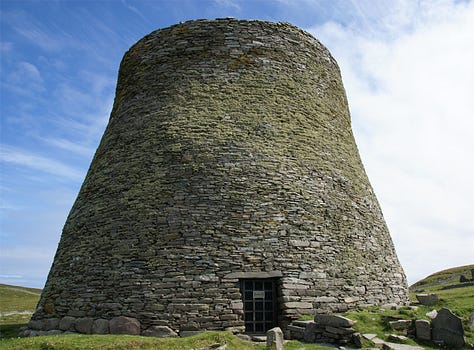
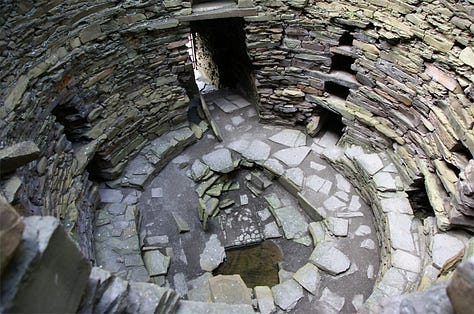
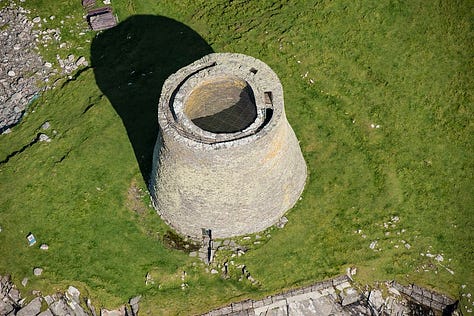
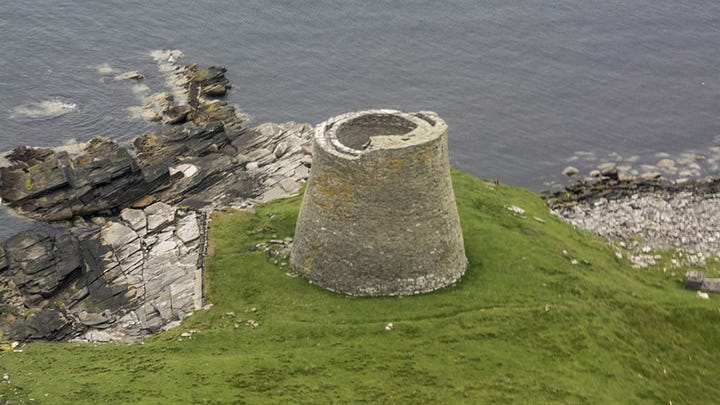
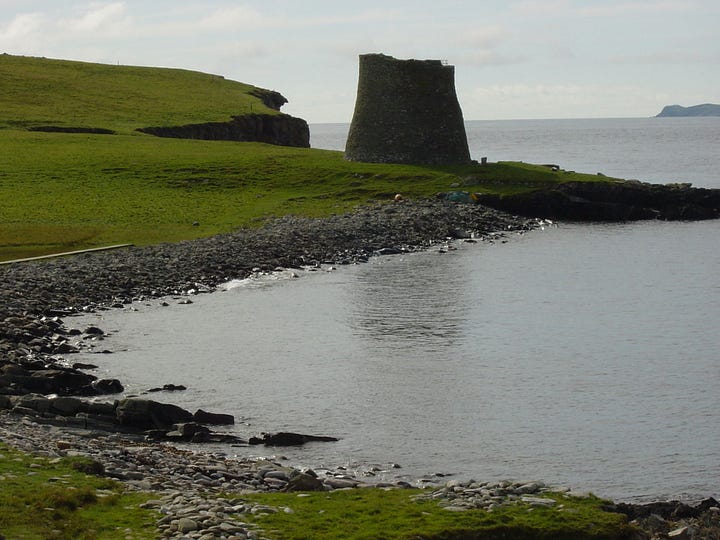
I highly doubt these cultures would allow foreigners to settle amongst them and marry their kin unless there was some affinity. I suspect we are looking at peoples from the Phoenician colonies making their way to the British Isles after the collapse of their locality, or the exhausting of resources that initially brought them to those regions. Where it to be a more significant event, it may be the splitting up of an empire into different factions, i.e., the Etruscans, Carthaginians, Romans, Greeks, etc.

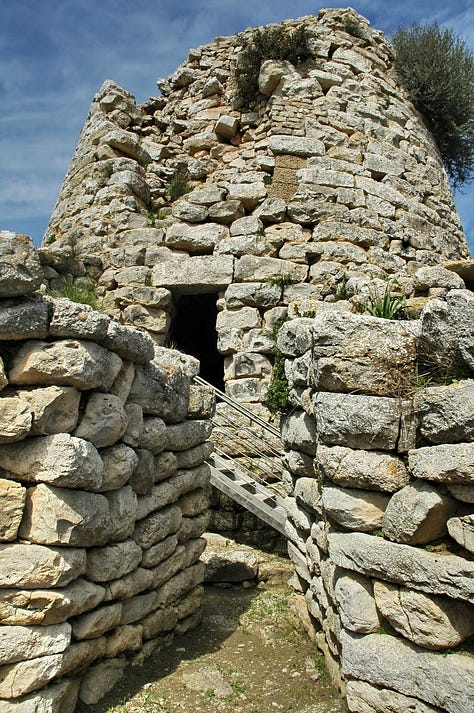

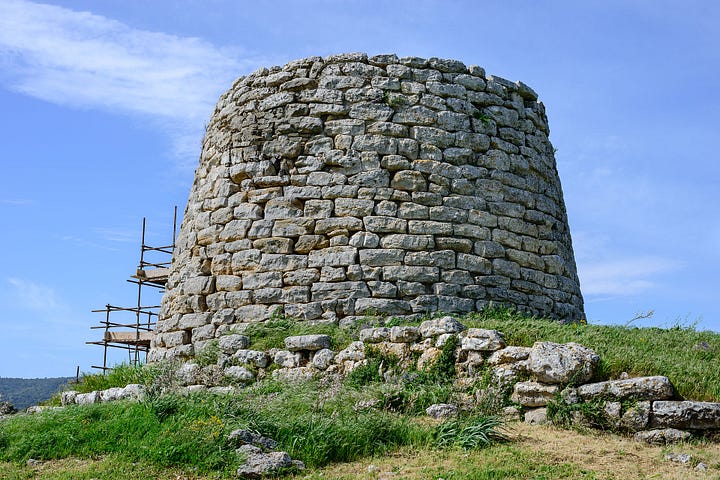
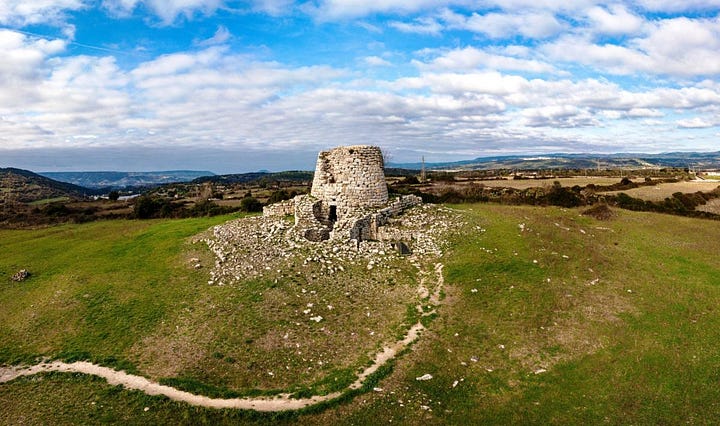
Being that the Scots and Irish, along with the other peoples/factions of Britain were ancient Phoenician, the Scots welcoming Picts would be akin to Italian Americans welcoming Sicilian or Sardinian immigrants.

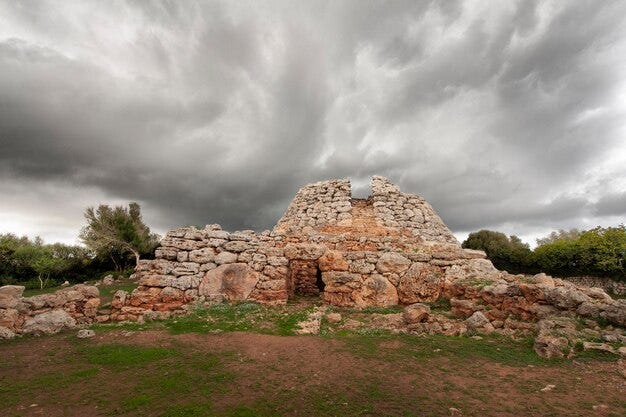
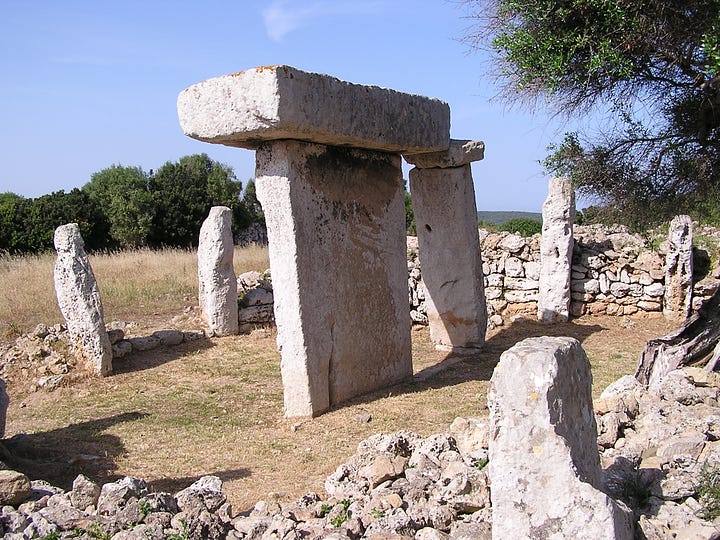
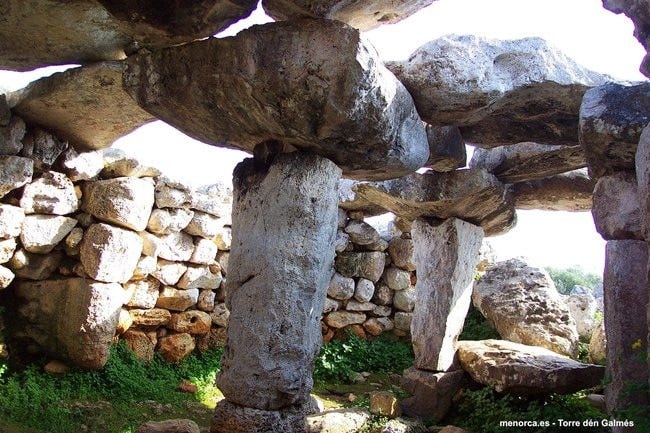
The architecture corroborates what is seen in language, namely a cultural diffusion of the Etrusco-Phoenician empire from the Mediterranean to Britain and the Orient. Vallancey wrote regarding Ireland (Collectanea de Rebus Hibernicis, Vol. I., p. ix), “The antiquities of this island bear uncommon and indelible marks of very remote times. Phœnician monuments are scattered over the surface of it, and what is more extraordinary, Phœnician names of things and places are retained even at this day.”
Again (Ib. p. x), “The pagan inhabitants of this island preserved the primitive Phœnician idolatry of the worship of the Sun and heavenly host, as types of a Supreme Being, until the arrival of the first Christian missionaries.”
He then goes on to describe the druids in a way that was nearly identical to early Christians, or Therapeuts, Essenes, Ecclectics, etc. citing Strabo (Lib. IV.), that they affected various and almost all kinds of Philosophy, and Pliny granted to them the skill in medicine and magic. The point of contention I have is that he claimed the Irish learned their enigmatical mode of philosophizing from the ancient Phœnicians, who had it from the Jews. This cannot be the case as the term Jew is a result of the first three letters (יהו) of Tetragrammaton (the basis for the Pythagorean Tetractys), or יהוה (while the last three are Eve, or הוה), and Jew, or man of God (Ieu/Iew/Iou), was a name for an initiate in the second stage of initiation into masonry; the prerequisite stage being that he was a good man or good fellow (Chrestian/Christian), the root of which is Good (ΧΡΗΣ; Chres, the corruption of which is Chris); the Greek Η can function like a Latin I. It is a challenge to place the Phoenician alphabet because it’s alleged to be from the hieroglyphs, yet it corresponds to the Etruscan. But I suspect the hieroglyphs are from a younger Egypto-Roman-Greek culture, which is why you won’t find hieroglyphics on the old structures or Great Pyramids in Egypt. The Rosetta Stones were not noticed by one historian from the era of their alleged creation. The following is Phoenician, Cadmean, Latin, and Etruscan compared to Irish.


The Phoenician (the first row below the Irish names) primary letters are identical to the Irish with the exception of H, which is an aspirate that exists in some languages like Latin, but is absent in other languages like Greek (though it is used, it is not written). The further back in history an alphabet existed, the fewer the letters and more examples of them serving several functions are found, such as the Phoenician Waw, which allegedly functioned as F, V, U, W, and Y. Higgins suspected that the U was originally the sixth letter in all of these alphabets (Celt. Drui. p. 257), but after it got changed by degrees into the V, then into the F or the Digamma, the necessity of having a separate sign for the vowel sound U obliged them to add a letter, and it is found in those alphabets at the end, after the final letter Tau, T, and is merely the letter V with a tail to it: Y.


Many of the learned men whose work I’ve gone through are of the opinion that this diffusion is from the Orient. But other learned men and myself are of the opinion that this diffusion is originating in the Mediterranean, namely Italy and Egypt, and spreading with the mariners, namely those we call Phoenician, also referred to as the Holy Sailors (Dioi Pelasgoi). If this sort of content intrigues you, grab a copy or listen to The Holy Sailors (click the image).
Become a member to see the rest of this resource.
Keep reading with a 7-day free trial
Subscribe to Ancient History, Mythology, & Epic Fantasy to keep reading this post and get 7 days of free access to the full post archives.






